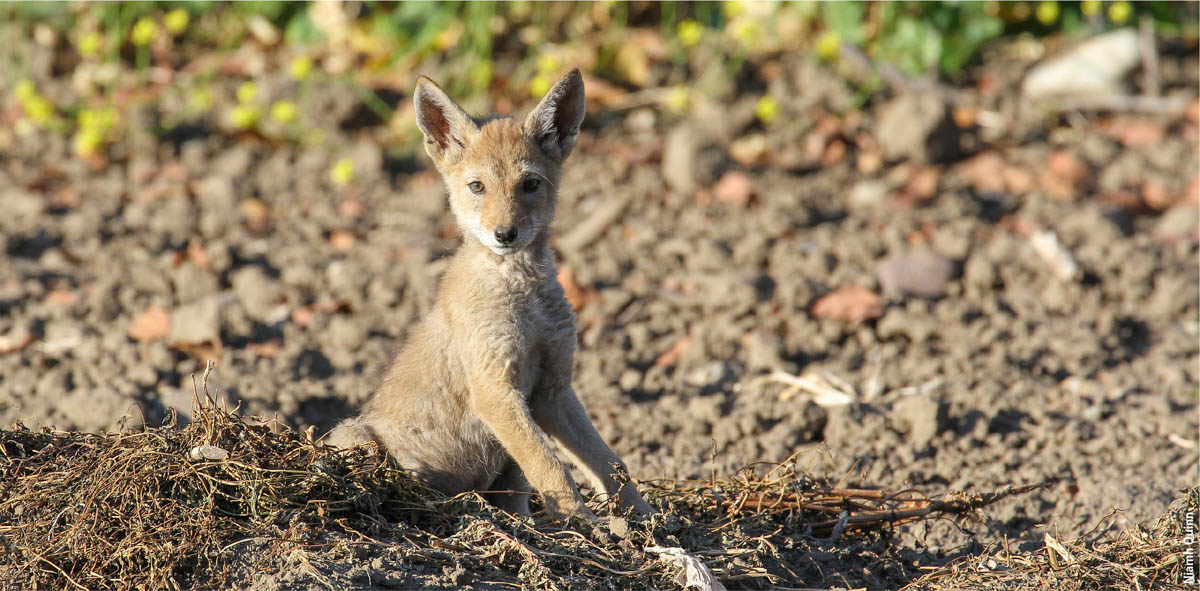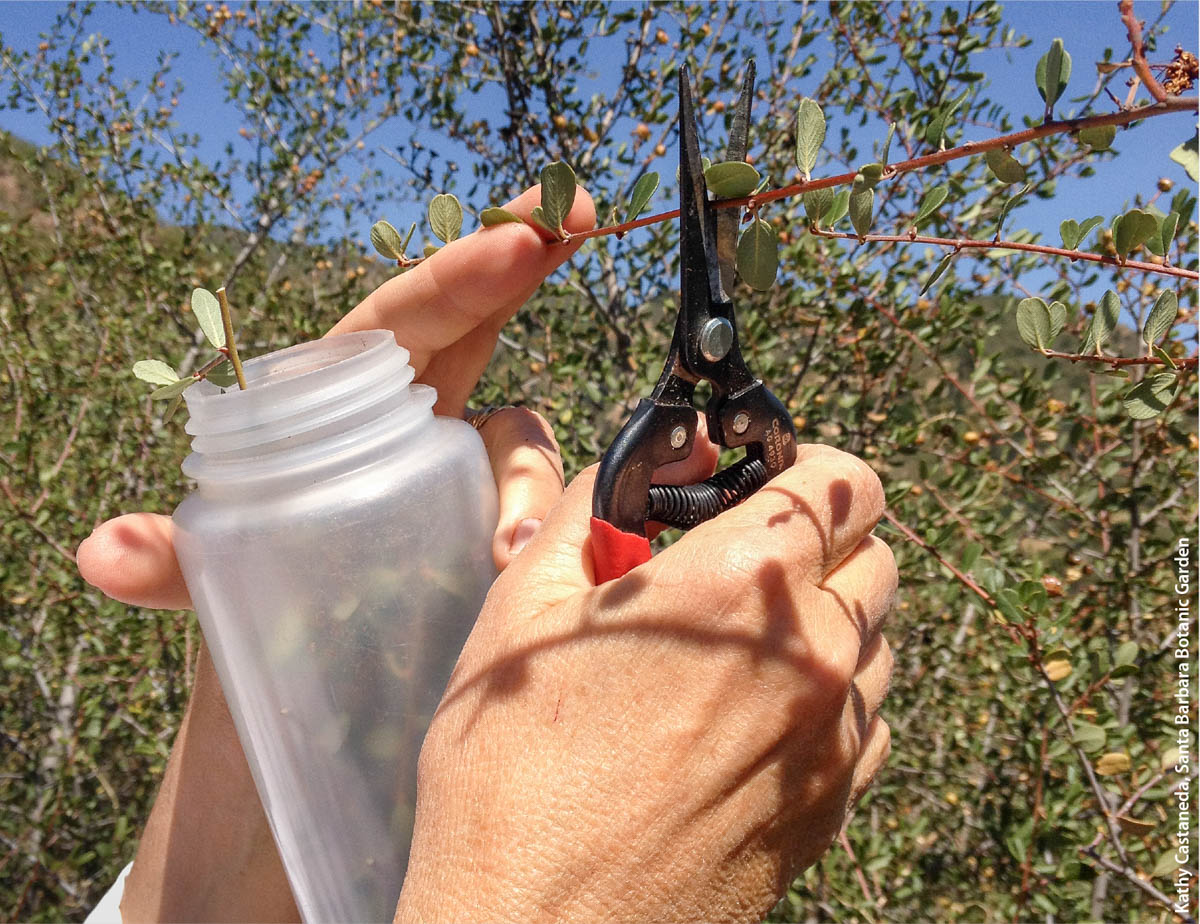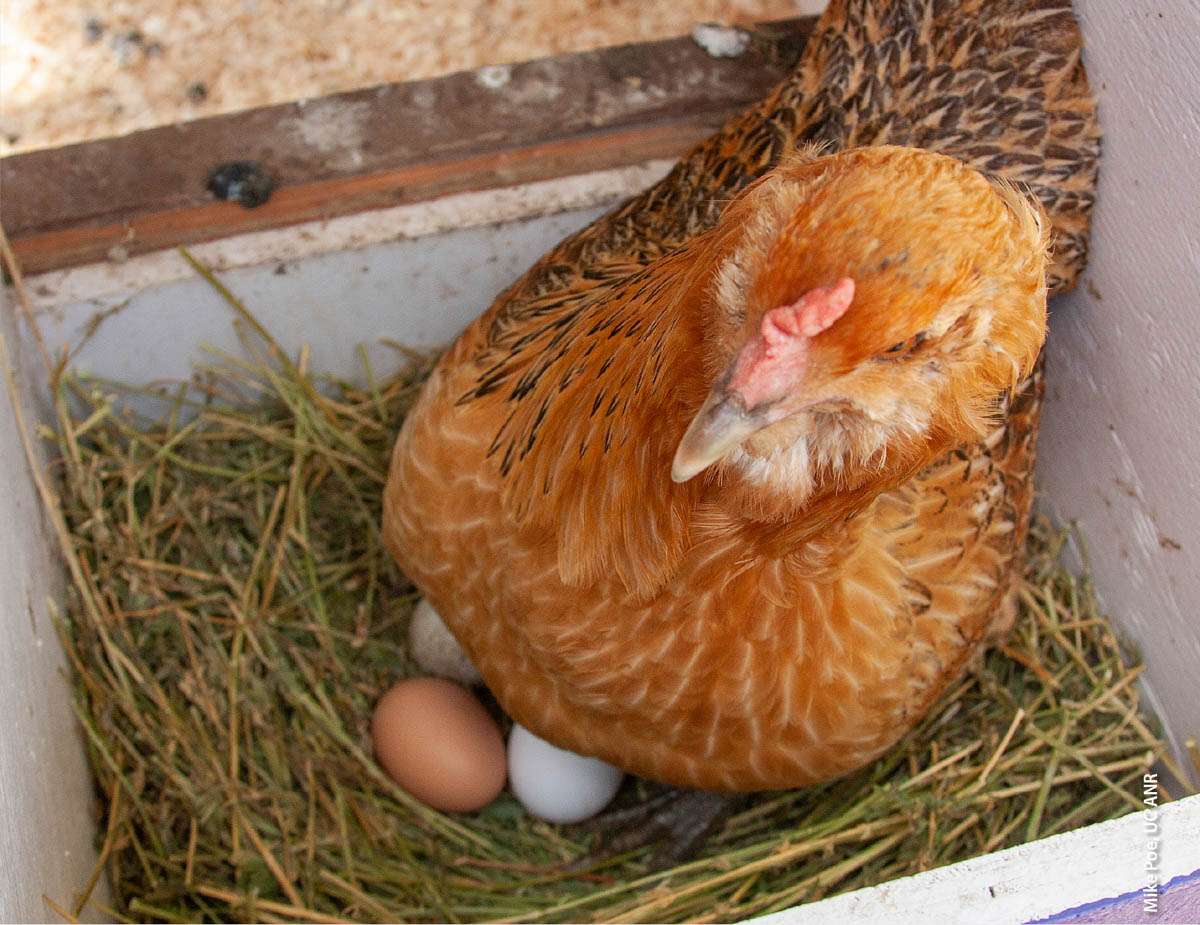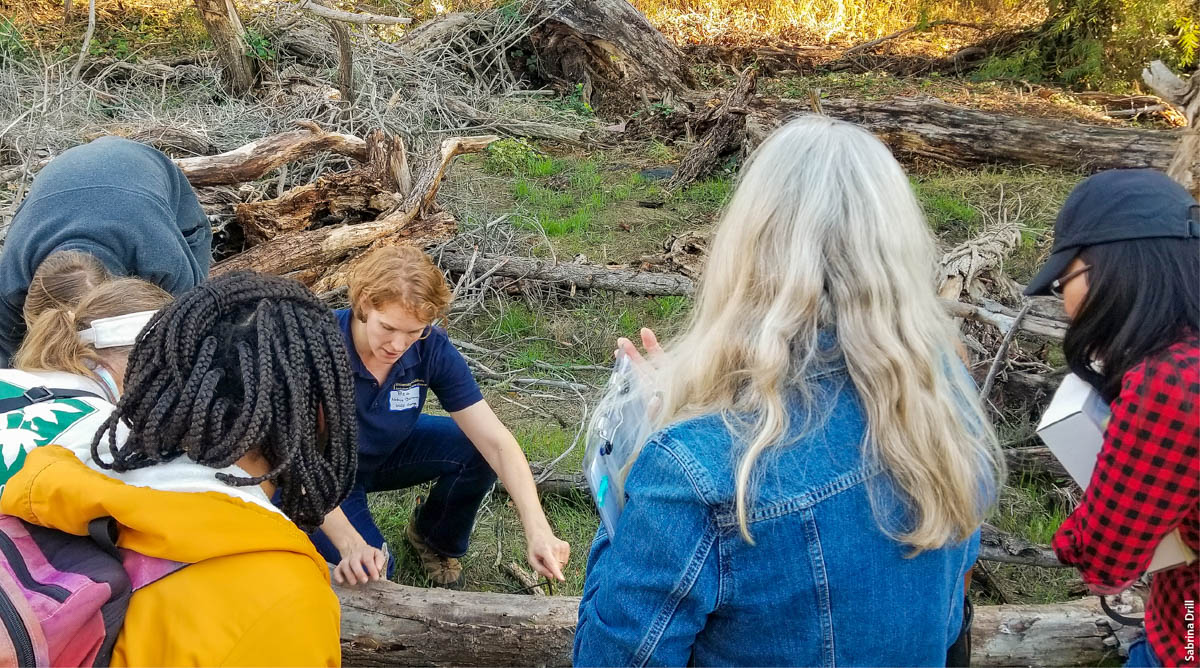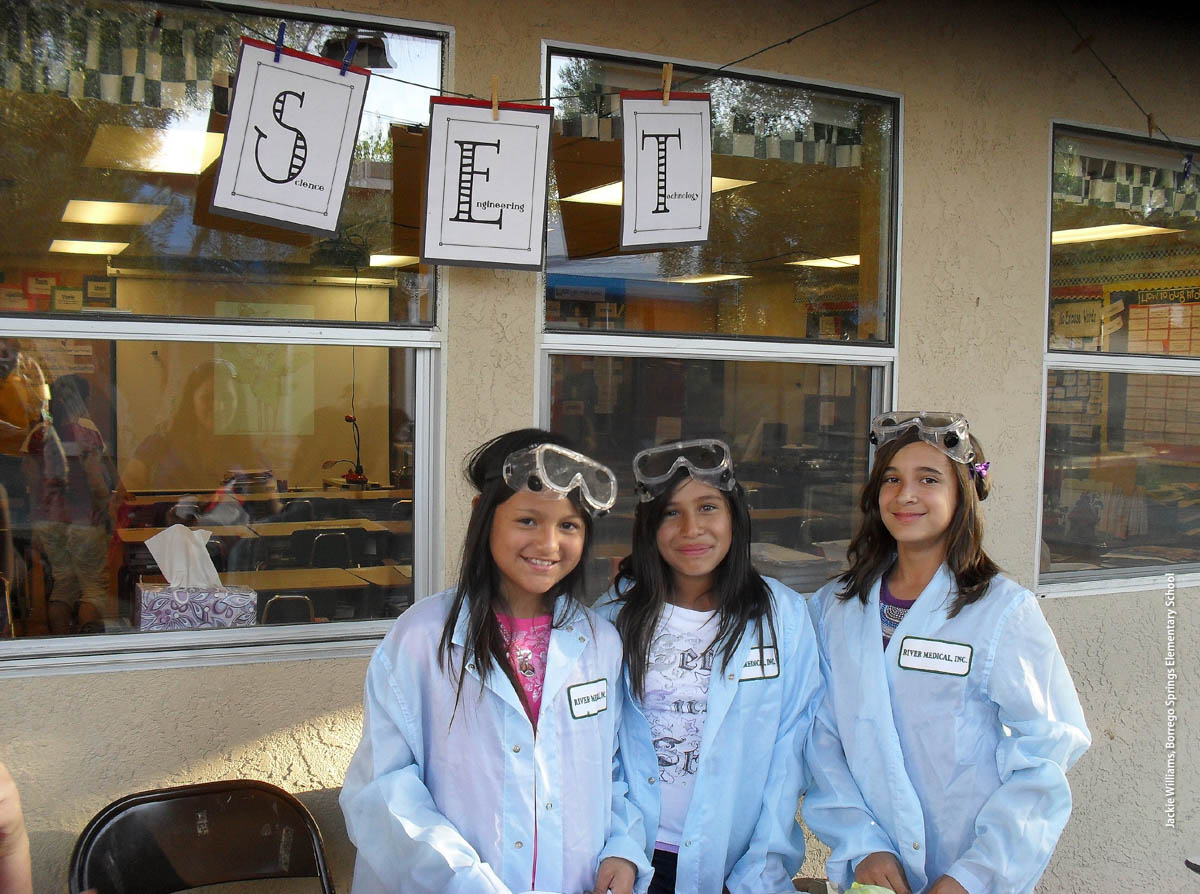All Issues
Community and citizen science projects around UC ANR
Publication Information
California Agriculture 75(1):9-13. https://doi.org/10.3733/ca.2021a0002
Published online March 10, 2021
PDF | Citation | Permissions
Summary
What do coyotes, eggs and leafy greens have in common? They're all subjects of UC ANR research projects to which everyday Californians have contributed.
Full text
UC Agriculture and Natural Resources (UC ANR), as an organization that has connected the people of California to UC research for over a century, is very well positioned to take advantage of emerging trends in scientist-community collaborations. The paragraphs below describe innovative projects that UC ANR personnel have developed, just in the last few years, to serve the public good by involving community members in the work that UC ANR does every day.
Caching coyotes
Coyotes eat cats. Humans disapprove of coyotes eating cats. They also react poorly when coyotes attack dogs. They're very, very opposed to coyotes biting humans.
These interactions, along with some milder variants, can be classified as coyote conflicts. In much of Southern California, coyote conflicts — or coyote encounters, in any event — are just a fact of life.
Until recently, however, coyote encounters were mostly a matter of hearsay and Facebook posts. “There was no general effort to collect information about coyote encounters,” says Niamh Quinn, a UC Cooperative Extension (UCCE) Human-Wildlife Interactions Advisor at the South Coast Research and Extension Center in Irvine. Because data on coyote encounters was never aggregated, municipal officials struggled to develop coyote management strategies. And this information gap was the impetus for Quinn to develop a community science project known as Coyote Cacher.
Three elements comprise Coyote Cacher. One is an online reporting system that allows residents to report coyote encounters. Another is an alert system that informs residents of coyote encounters within their zip codes. The last is a “back door” that allows municipal managers to view and act on information about coyote encounters. Since the program went live in 2017, the system has logged more than 9,000 coyote sightings or pet encounters — including 936 reports of attacks on pets.
But what actually happens when municipal officials learn of coyote conflicts? Does the Coyote Cacher enable coyote catching?
Not really. Quinn reports that cities use the Cacher more to manage citizens than to manage coyotes. That is, if coyotes have been particularly active in a specific area, a municipality might send residents an alert along with their utility bills. When people know that coyotes frequent their neighborhoods, they'll more likely take concrete steps to protect their pets. “Coyote Cacher is sort of an Amber alert for pets,” Quinn says.
A young coyote at South Coast Research and Extension Center. A community science project in Southern California called Coyote Cacher allows residents to report coyote encounters and receive alerts of coyote encounters in their zip codes.
The Coyote Cacher is a fairly easy project to manage — the community scientists who report encounters need no training at all. They just go to a website and fill in fields, providing as much or as little detail as they like. This all-are-welcome approach doesn't necessarily provide Quinn (or municipal managers) with perfect data about coyote hot spots. Instead, it might better reflect reporting hot spots, with volume of reports correlated to community enthusiasm. Still, it serves its purpose as a tool that lets “citizens help cities help citizens.”
The technical aspects of the Coyote Cacher tool were developed by a UC ANR statewide program known as the Informatics and GIS Program (IGIS), where GIS stands for geographic information systems. Quinn reports that “I just had the idea. IGIS said ‘Let's make this happen.’ They did a great job.”
Tracking local fire danger
Live fuel moisture is a measure of water content in green vegetation. When live fuel moisture in California becomes critically low, the state's fire season has reached its peak. Natural landscapes — and homes nearby — face a higher risk of fire.
Fire agencies have measured live fuel moisture for decades. They do so by snipping bits of live vegetation, transporting them in airtight containers to laboratories, weighing them, drying them in an oven until they are bone-dry and then weighing them again. The difference between the two weight measurements allows a calculation of live fuel moisture. These calculations help agencies decide where to put the arrow on the Smokey Bear fire danger sign.
But according to Max Moritz — a UCCE Wildfire Specialist, and an adjunct professor at UC Santa Barbara's Bren School of Environmental Science and Management — the information that the agencies produce isn't easy to find unless you already know where to look. And it won't tell you much about fire danger in your immediate vicinity unless you live right where fuels were sampled.
In Moritz's own Santa Barbara County, for example, the U.S. Forest Service regularly measures live fuel moisture — but not in the wildland-urban interface, where most people live. So it occurred to Moritz, at the time teaching a California Naturalist course at the Santa Barbara Botanic Garden, that he could help close this data gap if he recruited students to participate in a community science project. Volunteers were then taken to nearby sites and taught what sort of vegetation to snip (small twigs only, with no fruit or flower). After the samples were dried and weighed, the results began to be published on the Botanic Garden's website. The program Moritz helped establish is, to his knowledge, the first community science program in existence that focuses on live fuel moisture.
A volunteer samples big-pod ceanothus (Ceanothus megacarpus) for a community science project that measures live fuel moisture.
The next step he envisions is to disseminate information about live fuel moisture more broadly, perhaps in a local newspaper, and pair the moisture readings with specific, timely information about steps that homeowners should take right away to protect their lives and property. Also, he hopes to help people start their own monitoring programs around the state. “We could really scale it up if we had the right partners,” Moritz says.
Eggs and fire
If you asked people to name adjectives that describe chicken eggs, you'd probably hear lots of responses like “fragile,” “oval” and “delicious.” You'd talk to quite a few people before anyone said “toxic.”
But in 2018, when fires raged across much of California, it became reasonable to wonder if urban fires, which can produce smoke laden with fire retardants and heavy metals, could produce toxicity in eggs laid by backyard hens. So Maurice Pitesky — a UCCE Assistant Specialist in Poultry Health and Food Safety Epidemiology at the UC Davis School of Veterinary Medicine — decided, along with colleagues, to conduct a community science project in which owners of backyard chicken flocks would provide egg samples for laboratory analysis. The specific research focus was to better understand the spatial relationship between toxic eggs and fire.
To find whether urban fires could produce toxicity in eggs laid by backyard hens, UCCE Assistant Specialist Maurice Pitesky and his colleagues conducted a community science project in which owners of backyard chicken flocks provided egg samples for laboratory analysis.
The team recruited flock owners to participate through UC ANR's social media channels and by relying on information they had gathered from an earlier geo-survey of California's backyard poultry flocks (the geo-survey was itself a community science project). They got strong responses from Ventura and Sonoma counties (among other areas) because fires had recently occurred there — and because Sonoma County, in particular, has “a thriving backyard chicken scene.” It's a great example of local interest in an important issue driving local participation in relevant community science. It also shows how an existing network of social media and past participants can be crucial to a rapid response investigation. Community scientists sent their batches of eggs to the researchers, who in turn homogenized each batch and sent it off for laboratory analysis.
Encouragingly, they found no relationship between proximity to fire and presence of toxic materials in eggs. They found, however, that 8% of backyard flocks produced eggs with concerning levels of lead. But these higher lead levels were not associated with fire. Instead, they were associated with how long ago homes had been painted and how close they were situated to oil refineries. (The project received $10,000 in UC ANR funding, as well as some funds from the U.S. Department of Agriculture's Center for Food Animal Health.)
Community science projects have kept Pitesky busy in recent years. In addition to the egg study and the geo-survey, he has also conducted a community science project on antimocrobial resistance in California's backyard chickens, aiming to learn whether levels of antimicrobials are different in backyard versus commercial chicken flocks. Results of that study are not yet available, as the coronavirus pandemic has slowed down the testing process.
Fire and leafy greens
Wildfire smoke always poses health risks, especially for children, pregnant women and people with health problems such as diabetes and cardio-respiratory conditions. But when fires blazed across more than 160,000 acres of the wine country in 2017, they burned more than vegetation — they also burned over 6,500 structures. When smoke contains toxic materials that might be found in structures — heavy metals like lead, chemicals like PCBs and various petroleum products — the smoke becomes more dangerous to inhale. But inhalation isn't the only means by which contaminants can enter the body. So in Sonoma County, with its many home gardens and its thriving agricultural sector, many wondered if locally grown produce was safe to eat amid and after the fires.
No body of research existed to answer that question. So Mimi Enright — Program Manager for the UC Master Gardener Program of Sonoma County — quickly organized, along with colleagues, a community science project that involved collecting fresh produce and sending it off to laboratories for contaminant testing. They began training volunteers, many of them Master Gardeners, while the fires were still burning. Once the volunteers had been trained in how to gather and freeze washed and unwashed samples of leafy greens, they collected more than 200 samples from about 30 sites across the county — mostly home and community gardens. In 2018, in an extension of the research, they returned to the same sites to take soil samples. (The founding members of the project, along with Enright, were Julia Van Soelen Kim, a UCCE North Bay Food Systems Advisor; Suzi Grady, Executive Director of Petaluma Bounty; and Vanessa Raditz, who had just completed her Master of Public Health degree at UC Berkeley when the project was initiated and is now pursuing a doctorate at the University of Georgia.)
Their research indicates — good news — that fire-related contaminants in produce are a matter of low concern. The research also indicates that contamination in soil after urban fire seems a matter of low concern, though more research is needed. Nonetheless, the researchers encourage growers in their area to protect their lungs during future fires (for example, by wearing appropriate masks). They recommend that everyone eating fire-affected produce wash it with running water, peel outer leaves from produce if ash if visible and take extra precautions for children, elders or people with respiratory or heart disease.
The community science project was funded by a $10,000 UC ANR Opportunity Grant and later by a grant from the Bay Area Air Quality Management District. The funding allowed the researchers to test samples, test hypotheses and generate a report — and also to develop a toolkit that other communities can use to conduct similar research when they are affected by wildfire in the future. In October 2020, the researchers hosted a workshop on post-fire soil safety. Most impressively, the researchers began building a knowledge base around an important, little-studied topic.
Bad beetles
Invasive shot hole borers, small but troublesome beetles, were first observed in Southern California in 2010. Unfortunately for trees (and all who rely on them), these insects carry a fungus that causes Fusarium die-back, a disease that disrupts water movement in trees and eventually kills them. According to Sabrina Drill, a UCCE Natural Resources Advisor in Los Angeles and Ventura counties, the invasive shot hole borer attacks an enormous variety of tree hosts — including native California trees like riparian willows and common street trees like sycamores.
When Drill and UCCE Specialist Akif Eskalen realized that the borer was spreading too quickly and broadly for any single group of scientists to track it, they developed a plan to monitor the insect's spread with the help of volunteers from the UC Master Gardener program and with funding support from the U.S. Forest Service and the Thelma Hansen Trust. Drill and colleagues trained the volunteers to identify signs of the pest. Volunteers then chose areas to monitor, made multiple visits to those locations and uploaded photos to an online survey that Drill had created. Drill reports that, in the first season of observations, just one previously unknown infestation was discovered — good news in itself, though “a little disappointing for a scientist.”
Then Drill left for sabbatical. In stepped Beatriz Nobua-Behrmann, the new UCCE Urban Forestry and Natural Resources Advisor in Orange and Los Angeles counties, who decided to introduce some refinements to the project. For one thing, she recruited volunteers from UC ANR's California Naturalist program to supplement the Master Gardener volunteers, and introduced a new online reporting system based on iNaturalist, a platform that California Naturalists are already accustomed to using.
Beyond that, she decided to assess the accuracy of community scientists' identifications of invasive shot hole borers. Identifying the signs and symptoms of invasive shot hole borer infestation isn't easy, she says — even professionals get confused sometimes. So she designed a pilot project, now getting under way, in which participants complete a series of online trainings in identification, and Nobua-Behrmann and her colleagues double-check those identifications themselves. Her plan is to scale up the project once she understands what community scientists are good at identifying and not so good at identifying.
When UC Cooperative Extension researchers realized the invasive shot borer was spreading too quickly for a single group of scientists to track, they developed a community science project to train community members in identifying signs of beetle damage.
The pilot project, focused for the time being on Orange and Los Angeles counties, will continue at least until the middle of 2021 and, Nobua-Behrmann hopes, beyond. Once Covid-19 is a thing of the past, in-person training will supplant online training, presumably leading to better data quality. And 4-H students might get involved in identification of invasive shot hole borers — not necessarily for purposes of data aggregation, but to provide the young folks experience and education.
Young researchers
Cultivating Youth Scientists with Participatory Action Research is an out-of-school-time program that serves primarily Latino students at two high schools in Sonoma County — the program is delivered in Spanish at one school — as well as at a middle school and a high school in Humboldt County. The foundation of the program is a youth development approach called youth participatory action research (YPAR). In YPAR programs, the idea is that youth can be empowered by conducting research projects. They choose topics on their own, design and conduct their own research and, based on their findings, plan projects to improve their communities or their own lives. Adults provide guidance and facilitation.
Fifth-graders at a food tasting event. Youth Participatory Action Research programs empower youth to choose topics on their own, design and conduct their own research and plan projects to improve their communities.
Steven Worker is a 4-H Youth Development Advisor in Marin, Sonoma and Napa counties who, along with colleagues, oversees the program. “It's our own spin on YPAR,” he says. Worker reports that the program differs from traditional community science projects in that participants don't gather data for scientists. But it qualifies as civic science insofar as it engages young people to perform research themselves (with a twist — they use their research as the basis for concrete action in the world around them). At a Sonoma County high school, participants decided to research the factors that trigger racial bias and then searched for ways to minimize racism's negative impact in their community. At the Humboldt County middle school, participants, dissatisfied with the quality of cafeteria fare, researched why schools serve “fake food” and tried to develop ways for cafeterias to increase the availability of fresh food.
Last spring, the coronavirus pandemic interrupted the program — and the students' research. Worker and his colleagues are preparing to conduct the project virtually this year. Meanwhile, Worker reports that conversations to expand the project to other counties are under way.
UC ANR has provided $194,000 in grant funding for implementation of the program.



